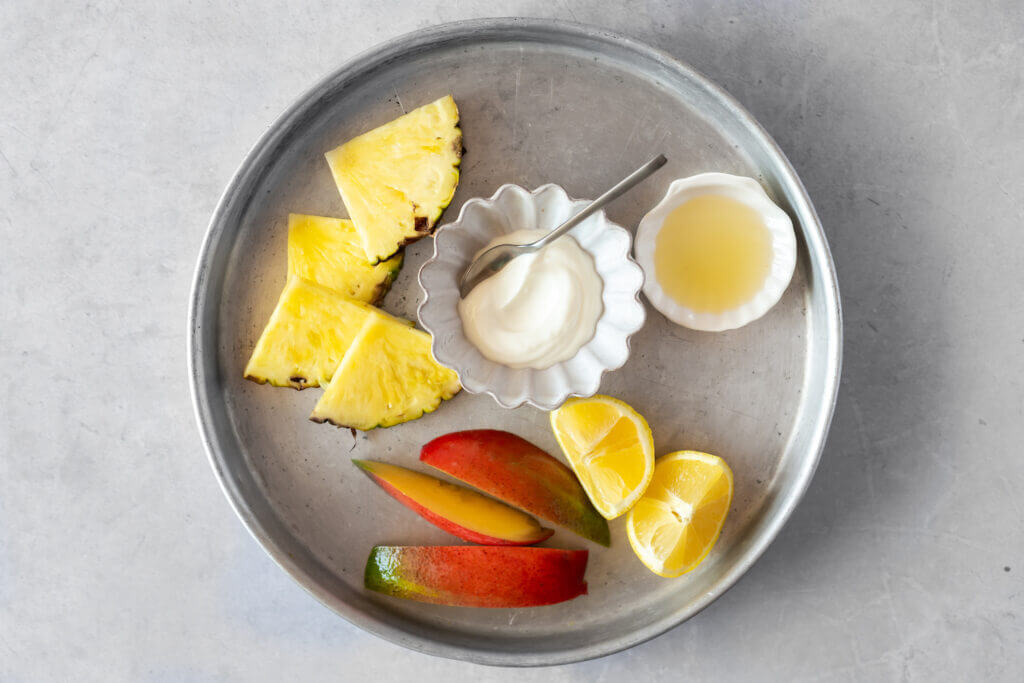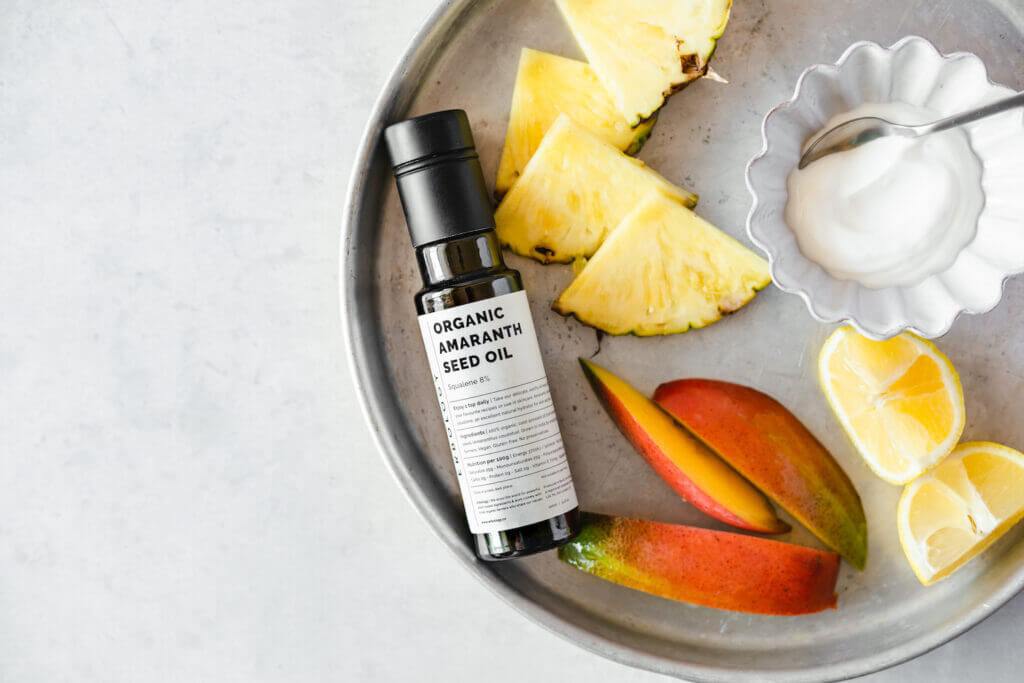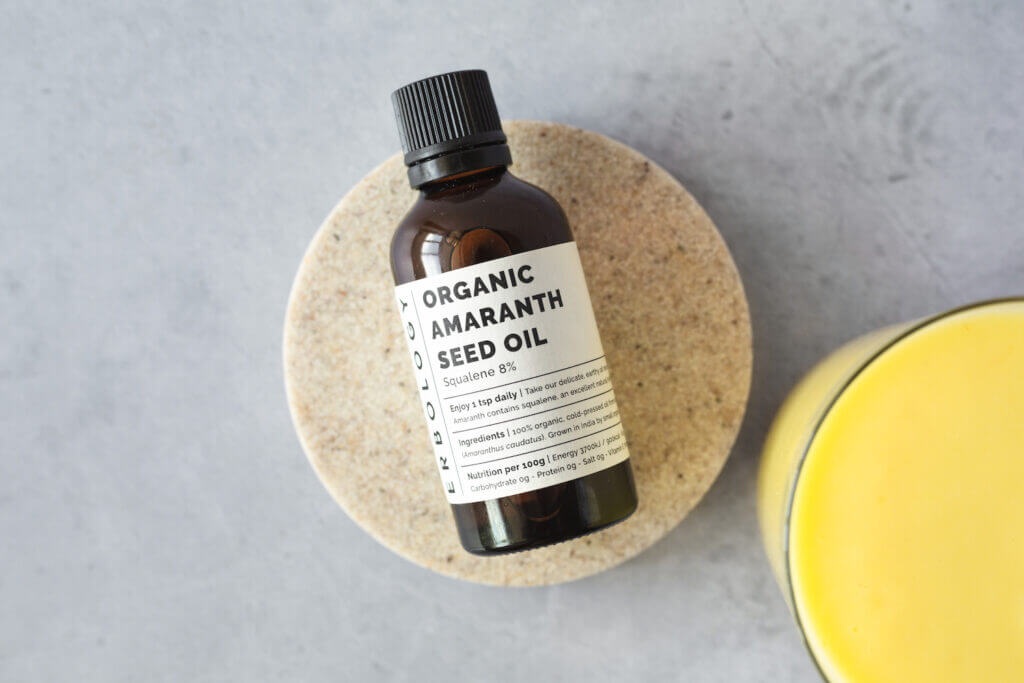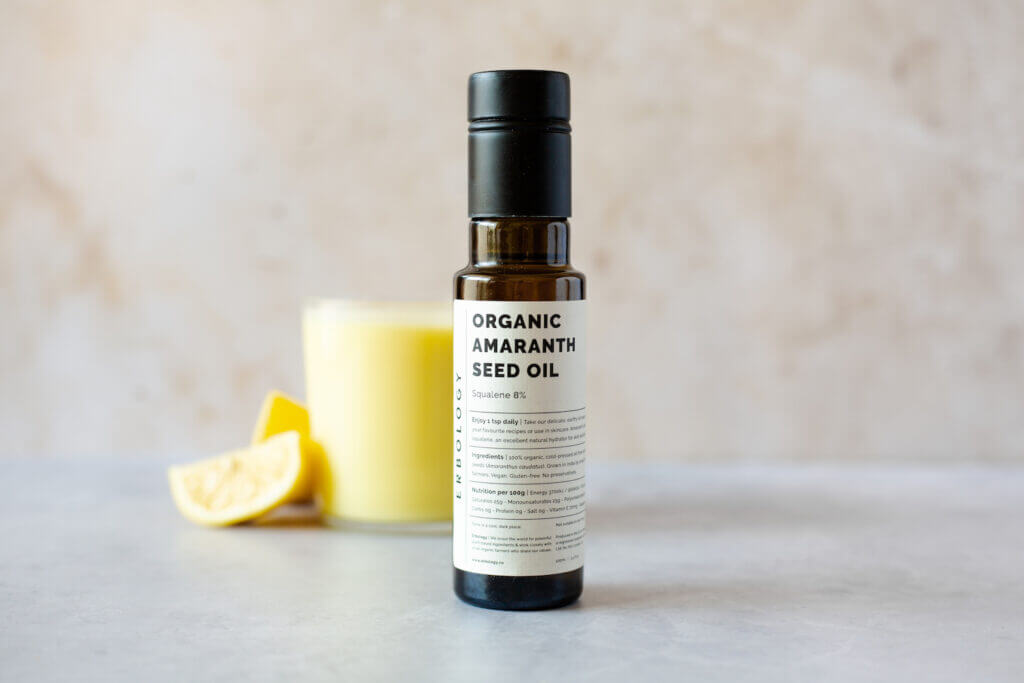Pineapple and Mango Smoothie Recipe with Amaranth Oil
- 2
Serving

Prep Time 5'

Total Time 7'

Easy

Vegan
- 2
Serving

Prep Time 5'

Total Time 7'

Easy

Vegan
Tropical fruits, tropical flavours
There’s something about the flavour of pineapple that transports us immediately to the tropical beach in our minds. It’s a taste that demands to be paired with a glorious azure blue sky and a sparkling sea; the gentle sound of waves breaking on soft, golden sand.
While many of us continue to associate the pineapple with Hawaii, it doesn’t actually come from there. Surprisingly, it is likely to have originated from South America, around the borders of Argentina, Brazil and Paraguay.(1)
While Hawaii was a big exporter during one period, most of our pineapples now come from Costa Rica. Like many holidaymakers, it seems as though the pineapple was ‘just passing through’ Hawaii. However, it remains a popular symbol of the island.
Meanwhile, our other star ingredient - the mango - comes from the other side of the world! It’s native to Southern India, Myanmar and the Andaman Islands. It is the national fruit not only of India, but also of Pakistan and the Philippines.(2)
Quite how these two fruits from the opposite sides of the globe ended up together in every ‘tropical’ fruit combo is a mystery. Yet, they complement each other’s flavours brilliantly; mango with its velvety sweetness, pineapple with its acid freshness. A perfect fusion of the fruits of two very different lands.

Health benefits of pineapple and mango
Naturally, both fruits have more to offer than simply their flavour (and their ability to conjure up hammocks and cocktails in our minds).
Pineapple, for instance, has been used as a medicinal plant by several cultures, particularly for its digestive and anti-inflammatory effects.
It produces bromelain, a type of enzyme which breaks down proteins. This, along with its anti-inflammatory effects, is thought to give it the ability to help fight off infection, relive symptoms of arthritis and even reduce pain after surgery.(3)
The US National Library of medicine lists burns, skin rashes and sinusitis as among the ailments which might benefit from bromelain.(3)
Meanwhile mango is an important fruit in Ayurveda, or traditional Indian medicine. Within this framework, it has been used to help with all sorts of health issues from dysentery to toothache. All parts of the plant can be used, but the juice of the fruit is thought to be refreshing and thus useful to treat heatstroke.(4)
More modern research has revealed that mango has strong antioxidant properties.(4) This means it can help protect your cells from damage by free radicals, including ageing.
Adding an oil
Now, you may not instinctively think of adding a cold-pressed oil to your smoothies. However, we may be about to change your mind.
Adding a healthy oil to your recipe provides a whole food group’s worth of nutritional goodies.
Long gone are the days when nutritionists believed that fats were unequivocally bad. In fact, unsaturated fats can be really good for us. Amaranth oil, for example, is rich in omega-6. This works in tandem with omega-3 to support your overall wellbeing.
It also contains a compound called squalene. If you are a skincare lover, you will be familiar with it already! This is because it is a fantastic natural moisturiser, helping your skin hold on to the liquid within its cells.
While we produce squalene naturally, the amount we make may fall short of what is needed to achieve glowing skin; hence, adding a drizzle into your smoothie is an easy way to care for it.
It’s also worth bearing in mind that the majority of squalene on the market actually comes from shark liver oil (and is therefore, obviously, not vegan). Amaranth oil is an excellent plant-based alternative.
Erbology Organic Amaranth Oil
We take a few extra steps to make sure our amaranth oil is the best around.
Firstly, it’s exceptionally pure, meaning it’s ideal for drizzling on your recipes or taking by the spoonful. However you can also use it as a nourishing skin or hair treatment to lock in moisture.
Our oil is cold-pressed and unrefined. We process all our oils this way in order to hold onto their precious nutrients (such as the polyunsaturated fatty acids mentioned above).
We don’t recommend that you use our oils for cooking as heat can degrade their nutrients. However, a cold recipe such as this smoothie is a great place to work a bit of amaranth oil into your diet.
Our amaranth seeds are sustainably sourced from small, independent organic farmers in India. We produce our oil in small batches so that we can make each one with care, and to ensure there’s no wastage.
So, you can feel good about adding this skin-loving superstar ingredient into your smoothies!
How to enjoy
If you’re able to whizz this smoothie up and pour it back into the pineapple before heading out to the beach for the day, good for you - we’re not jealous, we promise!
For those in less exotic climes, we highly recommend serving this smoothie over ice for a lovely summer’s breakfast, or a refreshing treat after a run.
A little squeeze of lime at the end will bring all the flavours together perfectly.
While we may not actually be on the beach, this smoothie will certainly help us feel a little bit closer!
Ingredients
- 1 cup pineapple, cubed
- ½ cup mango, cubed
- 2 tbsp coconut yogurt
- 1 cup coconut water
- 1 tsp Erbology Organic Amaranth Seed Oil
- 2 tsp agave nectar
- ¼ tsp vanilla extract
- Juice from ½ lime
Typical nutrition / serving
- Size: 150 g
- Serv. size: 2.8 g
Here's how you make it
- Place all the ingredients in a high speed blender and blend.
- Serve and enjoy!
If you tried this recipe...
Share your experience with us. Leave a comment below or post a picture on Instagram, tag @erbologyofficial #erbology and get a chance to win a healthy treat from us.


